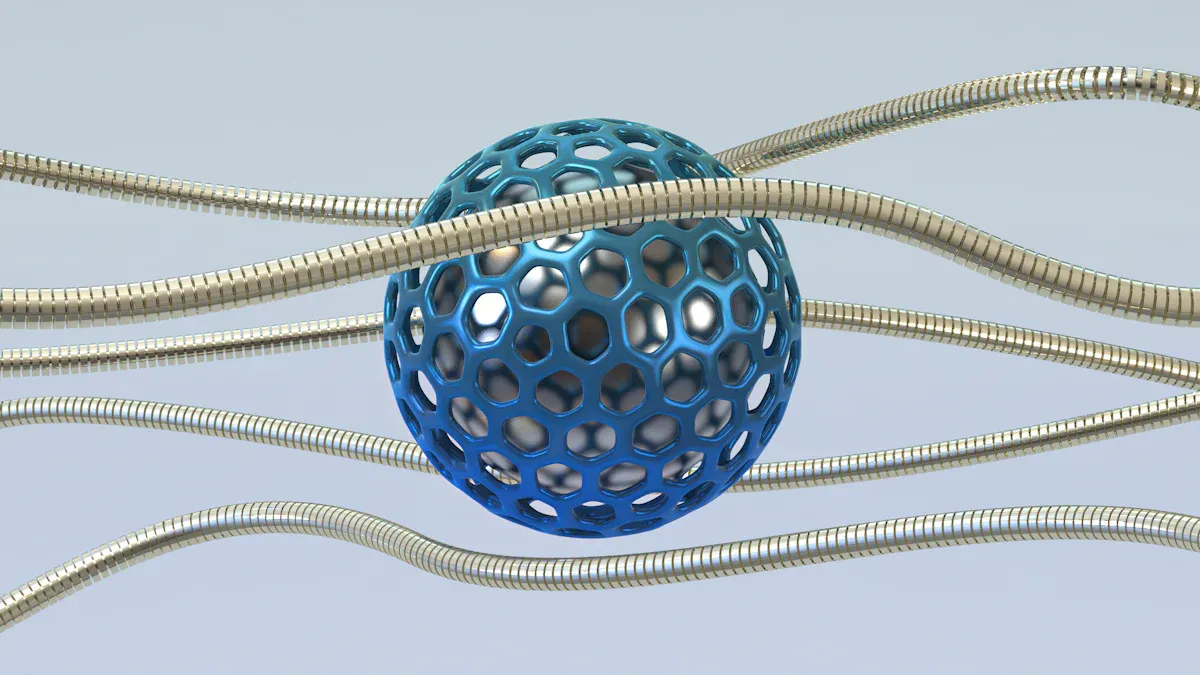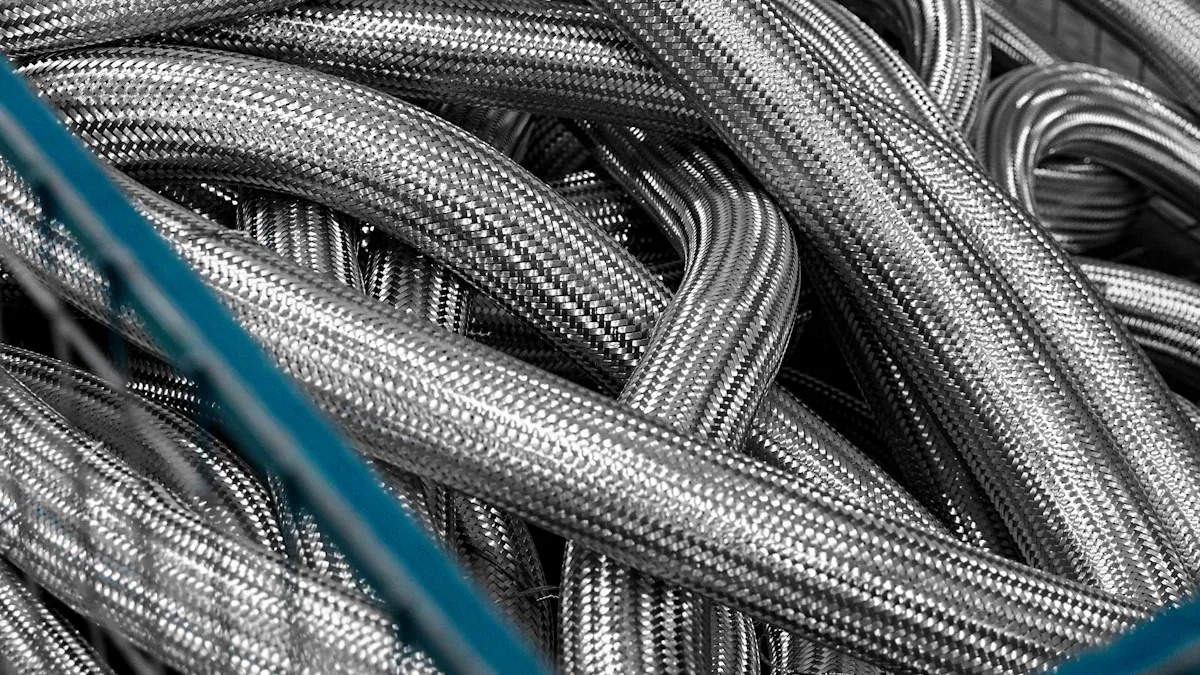Which Nitinol Tubing Fits Your Application Best?

Nitinol Tubing has revolutionized industries with its unique properties, making it a preferred choice for diverse applications. This specialized tubing offers exceptional tensile strength, ranging from 500 MPa to 900 MPa, and demonstrates superelasticity, allowing it to return to its original shape after deformation. The global Nitinol market, valued at $16.8 billion in 2023, highlights its growing demand, with Nitinol Tubing contributing 35% of this revenue. In medical fields, such as cardiovascular and orthopedic applications, its biocompatibility and corrosion resistance ensure safety and durability. These features make Nitinol Tubing products indispensable for both medical and industrial innovations.
Key Takeaways
Nitinol tubing has special features like flexibility and shape memory. It is great for medical and industrial uses.
Flexible nitinol tubing works well for medical tools. It is strong and safe for stents and catheters.
Shape memory nitinol tubing changes with heat. This helps tools work better in medical tasks.
Mixed nitinol tubing has both flexibility and shape memory. It fits many different industries.
Picking the right nitinol tubing needs careful thought. Look at size, thickness, and rust resistance.
Types of Nitinol Tubing

Superelastic Nitinol Tubing
Superelastic nitinol tubing is widely recognized for its ability to undergo significant deformation and return to its original shape without permanent damage. This property stems from the material's unique phase transformation between austenite and martensite under mechanical stress. Superelasticity allows the tubing to endure repeated cycles of bending and stretching, making it ideal for applications requiring high durability.
In the medical field, superelastic nitinol tubing is commonly used in catheter systems, stents, and endoscopic components. Its biocompatibility and fatigue resistance enhance the functionality and lifespan of these devices. For instance, process-optimized nitinol tubes can handle local strains up to 6%, ensuring reliability in demanding environments. Additionally, the aerospace and robotics industries leverage this tubing for actuators and control systems due to its ability to withstand high stress and temperature variations.
Shape Memory Nitinol Tubing
Shape memory nitinol tubing exhibits a remarkable ability to "remember" its original shape. When deformed, it can recover its form upon exposure to specific thermal conditions. This behavior is a result of the material's transformation between martensitic and austenitic phases. The transformation temperature, which can range from −20°C to +110°C, depends on the alloy composition.
This tubing is particularly valuable in applications requiring precise control and adaptability. In biomedical devices, such as stents and guidewires, shape memory alloys enable minimally invasive procedures by allowing the devices to expand or contract as needed. Differential scanning calorimetry (DSC) is often used to measure transformation temperatures, ensuring the tubing meets application-specific requirements.
Hybrid Nitinol Tubing
Hybrid nitinol tubing combines the best features of superelasticity and shape memory properties. This dual functionality makes it suitable for multidisciplinary applications. For example, in the medical industry, hybrid tubing enhances patient outcomes by providing flexibility and durability in stents and orthopedic implants. In aerospace and automotive sectors, it offers precise control and responsiveness in actuators, improving efficiency and performance.
The consumer electronics industry also benefits from hybrid nitinol tubing. Its flexibility and resilience make it an excellent choice for eyeglass frames and wearable technology. The tubing's corrosion resistance further ensures longevity, even in challenging environments. By balancing performance and reliability, hybrid nitinol tubing addresses the needs of diverse industries.
Key Specifications to Consider
Diameter and Wall Thickness
The dimensions of nitinol tubing, including its diameter and wall thickness, play a critical role in determining its performance. Tubing with precise dimensions ensures compatibility with application-specific requirements. For instance, in medical devices like catheters or stents, even minor variations in diameter can impact functionality and patient safety. Laboratory tests have shown that dimensional variations influence the mechanical reliability of nitinol. Studies comparing manufacturing techniques, such as TM-1 and TM-2, reveal that TM-1 tubing offers a fatigue life two to three times greater than TM-2 at 10⁷ cycles. This highlights the importance of selecting tubing with consistent and accurate dimensions for optimal performance.
Flexibility and Elasticity
The flexibility of nitinol is one of its most remarkable properties. This material exhibits superelasticity, allowing it to recover its original shape after deformation. Compared to stainless steel and titanium alloys, nitinol tubing offers unmatched flexibility and deformation recovery. Experimental tests conducted under ASTM F2516 standards confirm its ability to endure pre-strains of up to 6% and mean strains of 3%. These characteristics make nitinol tubing ideal for dynamic applications, such as medical implants and robotic actuators, where flexibility and elasticity are essential.
Corrosion Resistance and Biocompatibility
Nitinol's corrosion resistance and biocompatibility make it a preferred choice for medical and industrial applications. Its ability to resist corrosion ensures longevity, even in harsh environments. Additionally, nitinol is non-toxic and well-tolerated by the human body, making it suitable for implants and other biomedical devices. A technical comparison of nitinol's properties highlights its superior performance in these areas. For example, its biocompatibility ensures safety in cardiovascular stents, while its corrosion resistance enhances durability in industrial tools exposed to moisture or chemicals.
Applications and Best Fit

Medical Applications
Nitinol tubing plays a critical role in medical device applications due to its unique properties. Its biocompatibility and corrosion resistance make it ideal for use in cardiovascular stents, guidewire or catheter shafts, and other minimally invasive devices. Self-expanding stents, for instance, leverage nitinol's superelasticity to adapt to the body's anatomy, ensuring optimal blood flow. Over 1.5 million cardiovascular stents made from nitinol tubing are implanted globally each year, highlighting its widespread adoption in healthcare.
In addition to stents, nitinol tubing is used in orthopedic implants and surgical instruments. Its flexibility and fatigue resistance allow these devices to endure repetitive motion without compromising performance. Catheters and guidewires benefit from nitinol's ability to navigate complex anatomical pathways, enhancing precision during procedures. These applications demonstrate how nitinol products improve patient outcomes and advance medical engineering.
Industrial Applications
Nitinol tubing excels in industrial settings where durability and performance under extreme conditions are essential. Aerospace engineering relies on nitinol for actuators, sensors, and structural components. The material's lightweight properties enhance aircraft efficiency, reducing fuel consumption and emissions. Additionally, nitinol tubing withstands high temperatures and pressures, making it suitable for demanding environments.
Engineering tests reveal that manufacturing techniques significantly impact the fatigue life of nitinol components. For example, TM-1 tubing offers a fatigue life two to three times greater than TM-2 tubing at 10⁷ cycles. This durability ensures reliable performance in applications requiring repeated mechanical stress. Nitinol's versatility extends to automotive engineering, where it contributes to the development of electric vehicles and other advanced technologies.
Consumer Applications
The consumer electronics industry benefits from nitinol tubing's flexibility and resilience. Foldable phones and wearable technology incorporate nitinol products to achieve innovative designs and enhanced durability. The foldable phone market, projected to grow at a 40.3% CAGR from 2023 to 2030, reflects the increasing demand for nitinol-enhanced devices.
Eyeglass frames and other consumer goods also utilize nitinol tubing for its shape memory and corrosion resistance. These properties ensure long-lasting performance, even in challenging environments. As consumer preferences shift toward sustainable and high-performance products, nitinol applications continue to expand across various sectors.
Understanding the types and specifications of nitinol tubing is essential for selecting the right product for specific applications. Each type of tubing—superelastic, shape memory, or hybrid—offers unique benefits tailored to different needs. For example, superelasticity enhances the performance of medical devices like stents, while shape memory properties improve the precision of industrial tools.
The global demand for nitinol tubing continues to grow due to advancements in material science and the increasing prevalence of minimally invasive surgeries.
Experts emphasize the importance of tensile strength and other specifications to ensure the reliability and safety of medical devices.
Careful assessment of application requirements ensures optimal performance. Consulting industry experts can further guide decision-making, ensuring the tubing meets both functional and safety standards.
FAQ
What makes Nitinol tubing unique compared to other materials?
Nitinol tubing stands out due to its superelasticity and shape memory properties. These features allow it to recover its original shape after deformation or temperature changes. Its biocompatibility and corrosion resistance further enhance its suitability for medical and industrial applications.
How is the transformation temperature of Nitinol tubing determined?
Manufacturers use techniques like Differential Scanning Calorimetry (DSC) to measure transformation temperatures. This ensures the tubing meets specific application requirements. The transformation temperature depends on the alloy composition and can range from −20°C to +110°C.
Can Nitinol tubing be customized for specific applications?
Yes, manufacturers can customize Nitinol tubing by adjusting its dimensions, transformation temperature, and mechanical properties. This ensures compatibility with application-specific needs, such as precise diameters for medical stents or enhanced fatigue resistance for industrial tools.
Is Nitinol tubing safe for medical use?
Nitinol tubing is highly biocompatible and non-toxic, making it safe for medical applications. Its corrosion resistance ensures durability in the human body. These properties make it ideal for implants, stents, and other minimally invasive devices.
What industries benefit most from Nitinol tubing?
Nitinol tubing benefits industries like healthcare, aerospace, and consumer electronics. Medical devices, actuators, and wearable technology all leverage its unique properties. Its versatility and durability make it indispensable across various sectors.
💡 Tip: Consult with experts to ensure the selected Nitinol tubing meets your specific application requirements.
See Also
Choosing the Right Nitinol Tubing Supplier for You
Best Nitinol Tubing Supplier for 2mm OD Savings
The Manufacturing Process of Nitinol Tubing for Medicine

